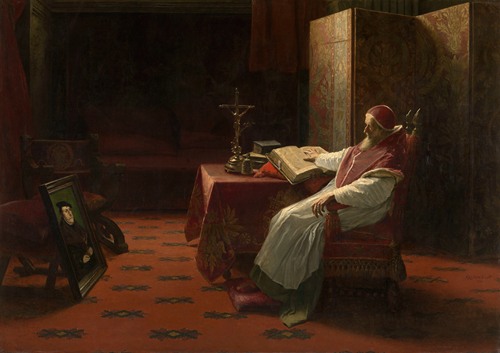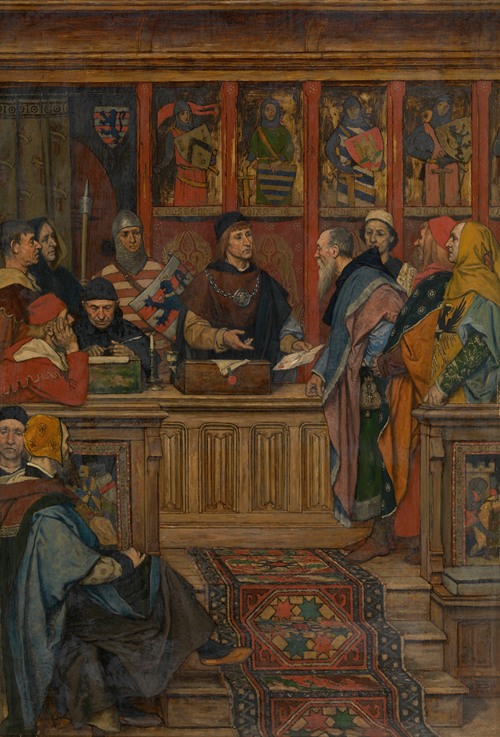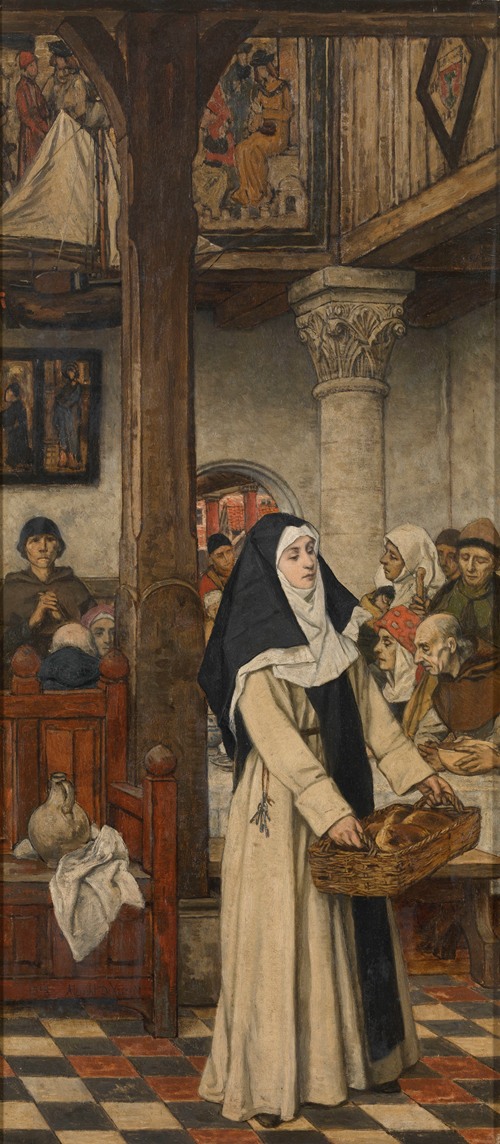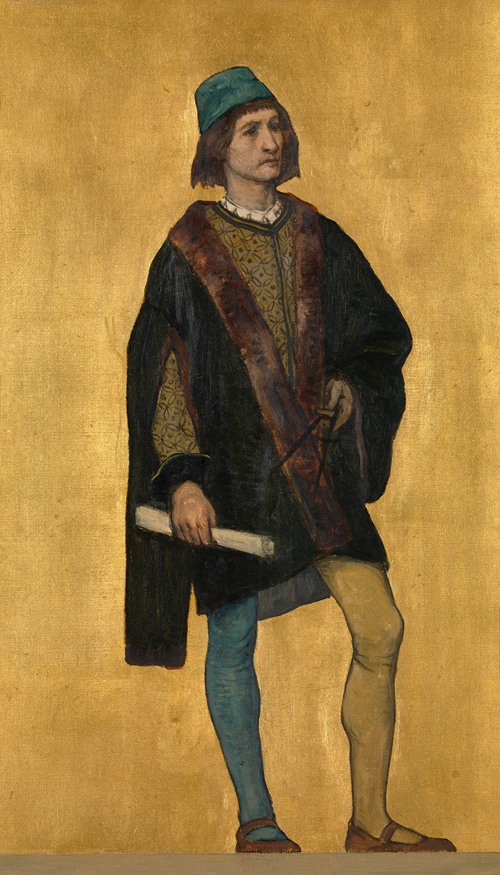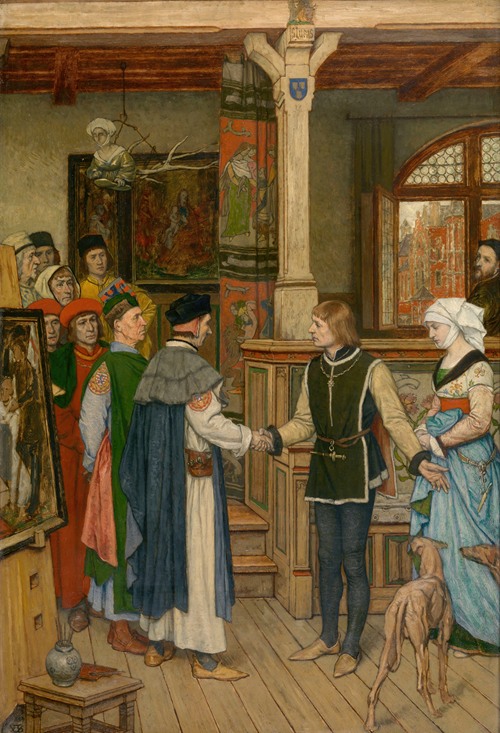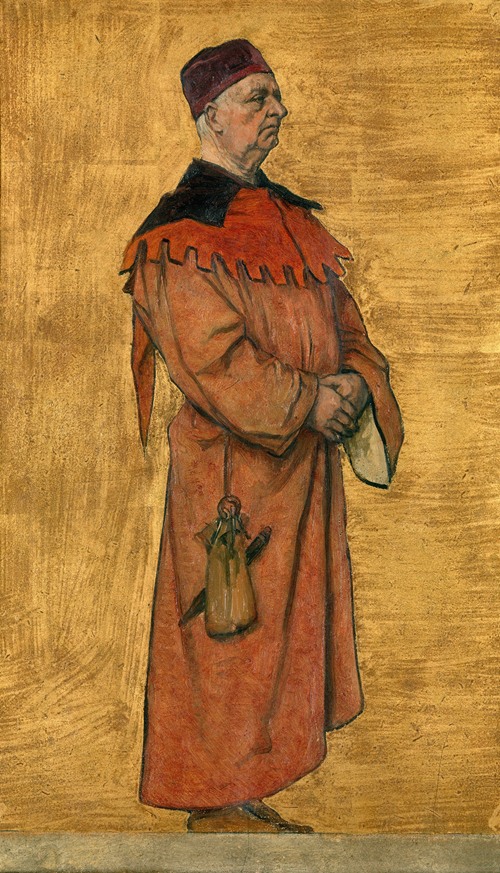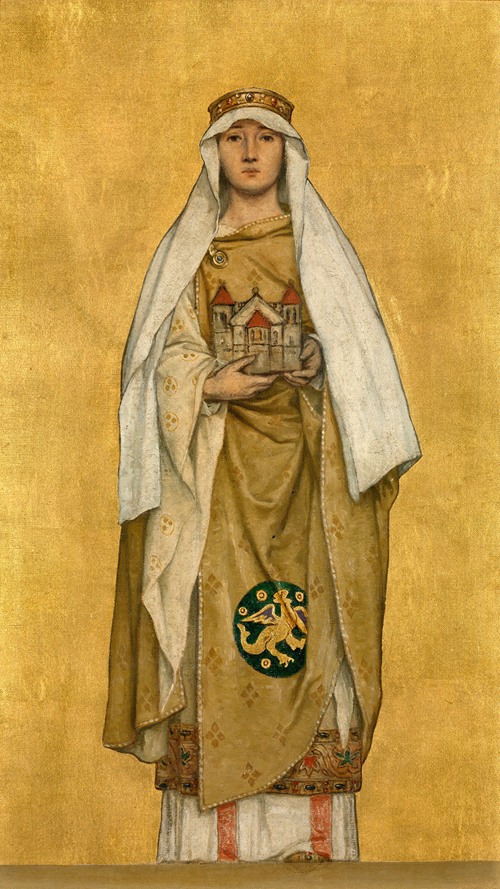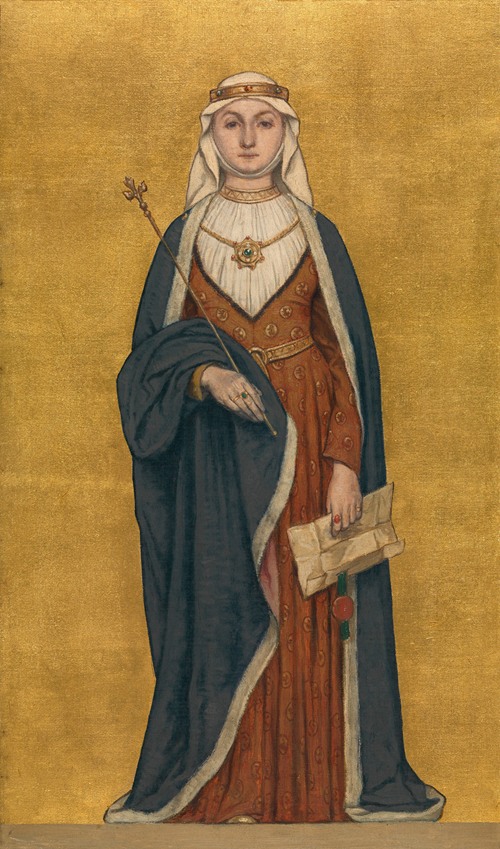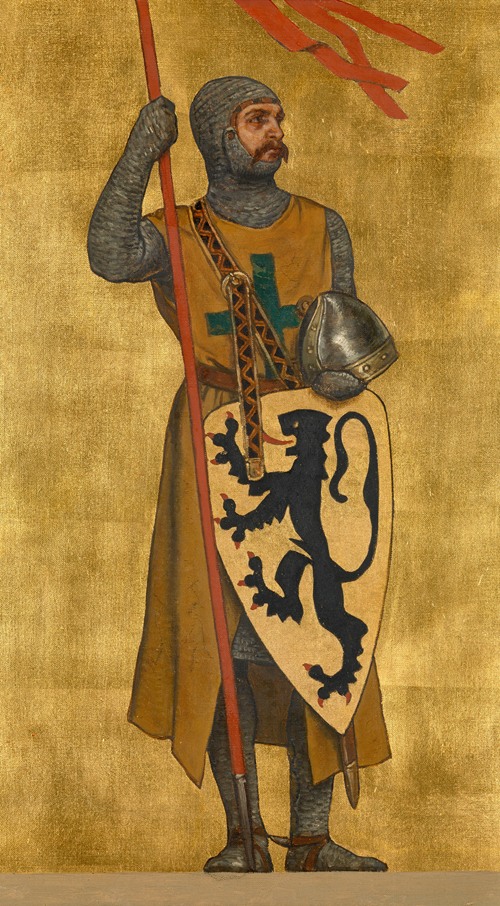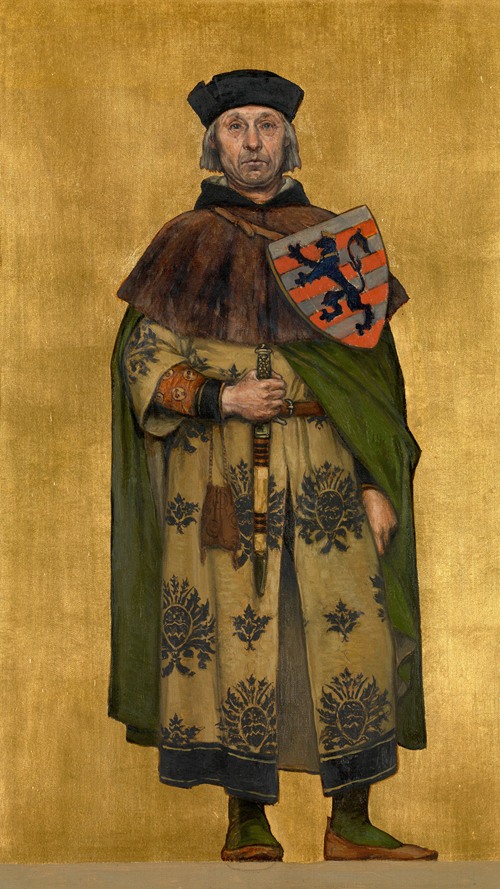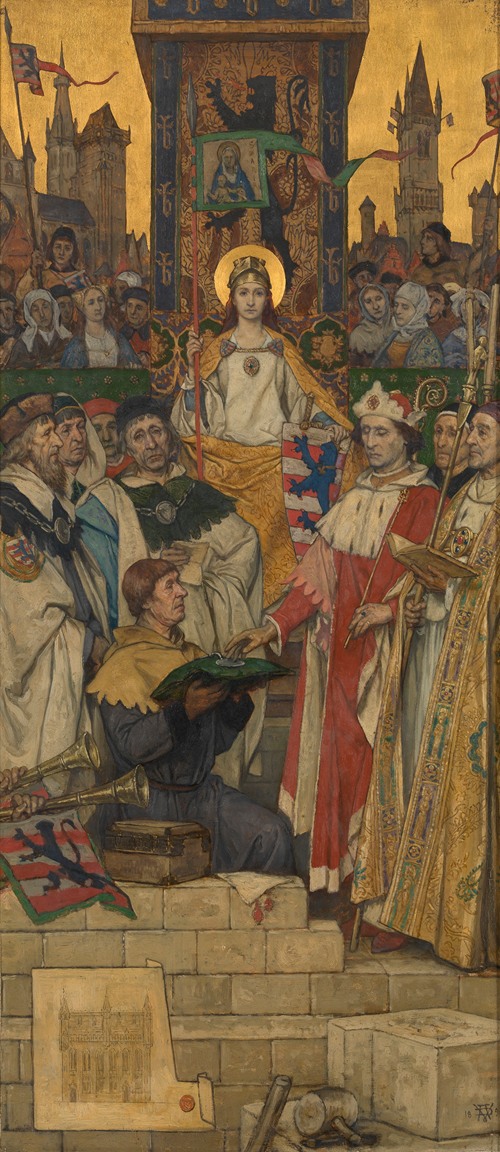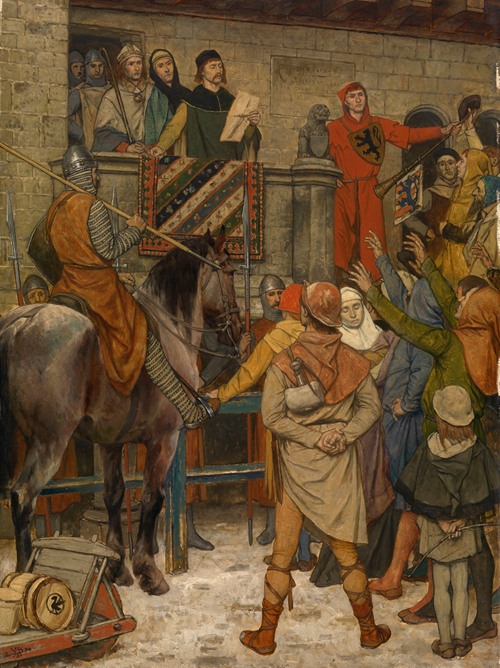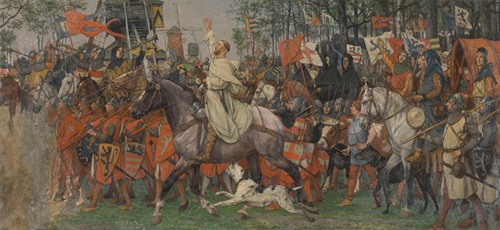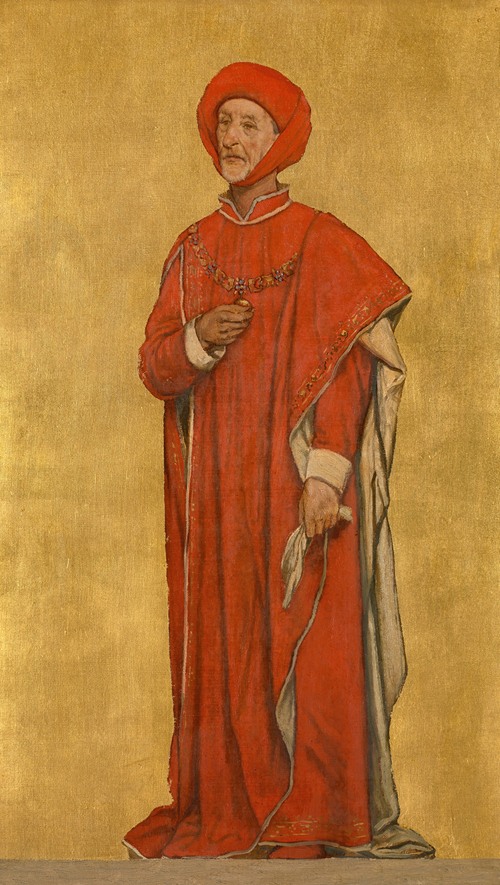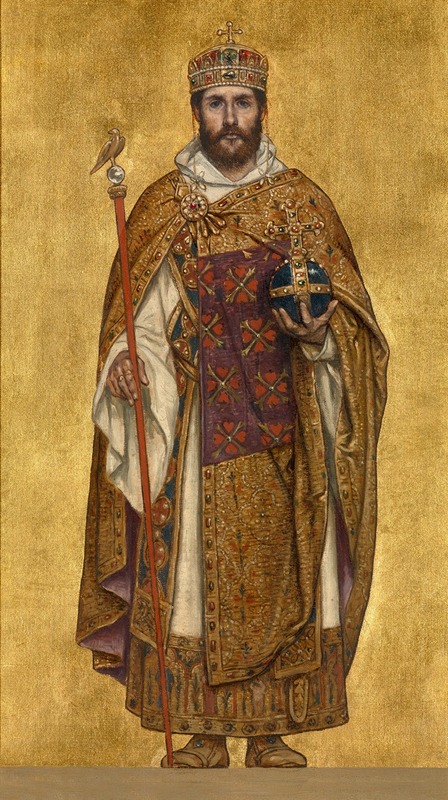
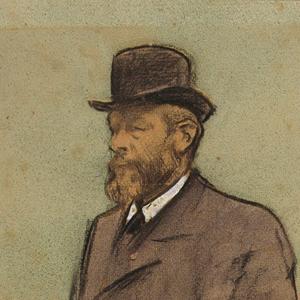
Albrecht Frans Lieven De Vriendt or Albrecht De Vriendt was a Belgian painter known for his genre scenes, history paintings, interiors and figure paintings. He was also active as an author, publisher and copyist He was also a watercolorist and an etcher. He participated in the monumentalist movement in Belgium and continued the tradition of the Belgian Romantic-historical school long after it had been abandoned in his country and abroad. He was the brother of the painter Juliaan De Vriendt with whom he often collaborated on decorative projects. He was a director of the Royal Academy of Fine Arts of Antwerp.
Albrecht De Vriendt was the son of decorative painter Jan Bernard (Jean) de Vriendt (1809–1868) and Anna Rosalia Ghiert. His father was a decorative painter mainly known for landscapes and still lifes. Albrecht's two-year older brother Juliaan De Vriendt and three-year older sister Clementine De Vriendt also became painters. He and his siblings were initially trained by their father who conveyed his interest in Flemish art and language to his children. From an early age he assisted his father in some of his decorative projects. From 1861 he exhibited some of his early works. In 1865 he moved to Antwerp where his brother was already living. Here he studied under the painter Victor Lagye. During his time in Antwerp he came under the influence of the pre-eminent history painter of Belgium of that time Jan August Hendrik Leys.
After a brief return to Ghent Albrecht moved to Brussels where he settled down. Here he married in 1880 Laure Fiévé. The couple had five children. With his brother Juliaan he made a number of journeys. In 1869 they visited Germany. In 1880 Albrecht traveled to Italy. That same year the brothers journeyed through Egypt and Palestine. Numerous studies, watercolors and pastel drawings of all kinds and sizes, as well as a faithfully executed and a jointly executed panorama, entitled The Death of Christ, were the fruits of this journey.
In the meantime Albrecht's artistic reputation grew. The artist was a member of various academies and societies. He also received several honors. His works were acquired by museums in Belgium and abroad including the In 1894 he was made a commander of the Order of Leopold, great officer of the Order of Isabella the Catholic and commander of the Order of Merit of Saint Michael. Albrecht was also appointed member of the provincial commission of the Royal Commission of Monuments and in that position he advised on public artistic projects. The brothers Albrecht and Juliaan shared a house in which they both had a studio. This physical closeness likely explains the stylistic similarity between the work of the two brothers.
After the death of Charles Verlat, Albrecht De Vriendt was appointed in 1891 as director of the Royal Academy of Fine Arts of Antwerp. In 1894 he was appointed professor of the National Higher Institute for Fine Arts Antwerp which had been established in 1885 as a post-graduate program in arts. Albrecht dedicated himself to his academic functions.
From the mid-1850s the Belgian government began to promote monumental art in Belgium. It provided financial assistance to artists on various projects. The promotion of monumental art dealing with episodes from the Belgian national history was regarded by the government of the young Belgian state as an important means of creating a national identity. The Belgian prime minister Charles Rogier was in particular in support of this movement. Jean-François Portaels and Jean Baptiste van Eycken, both pupils of François-Joseph Navez, helped launch the monumentalism movement in Belgium. They did this by introducing into Belgium new fresco techniques such as water glass painting, which they had studied abroad. The monumentalism movement was subsequently taken up by artists such as Jan Swerts and Godfried Guffens who had learned about the movement in Germany. Albrecht de Vriendt and his brother Juliaan also participated in the monumental art movement. One of the projects they worked on was the decoration of the Gothic room in the town hall of Bruges, a work that after his death was completed by his son Samuel De Vriendt and his brother Juliaan. In his role as a member of the provincial commission of the Royal Commission of Monuments he also regularly advised on various projects for the renovation of monuments in Belgium.
When he died in 1900, his brother succeeded him in the position of director the Antwerp Academy.
Among his students were Pieter Franciscus Dierckx, Frans Mortelmans, Isidoor Opsomer, Jan Brouwer Bogaerts, Willem van Barend Dort (sr.), Albert Geudens, Gerrit David Gratama, Georges Lemmers, Simon Maris, Johan Sikemeier, Piet Slager (jr.), Julien Stappers, Hendrik Jan Wolter, Jacques Zon and Emile Rommelaere.
